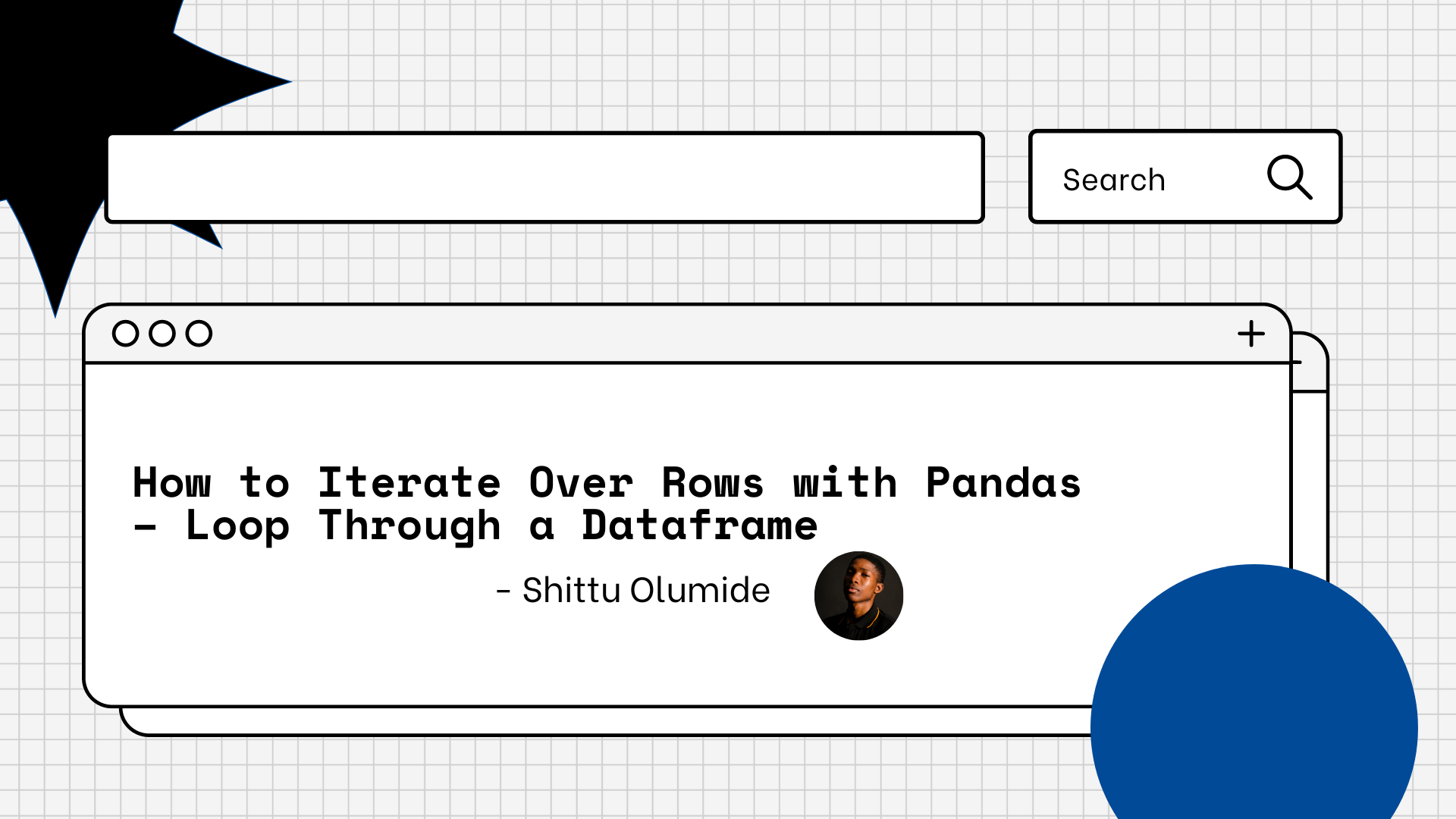This article provides a comprehensive guide on how to loop through a Pandas DataFrame in Python.
I'll start by introducing the Pandas library and DataFrame data structure. I'll explain the essential characteristics of Pandas, how to loop through rows in a dataframe, and finally how to loop through columns in a dataframe.
What is Pandas?
Pandas is a popular open-source Python library that's used for data cleaning, analysis, and manipulation. In addition to functions for carrying out operations on those datasets, it offers data structures for effectively storing and handling large and complex datasets.
Some of the essential characteristics of Pandas are:
- DataFrame and Series Objects: Pandas provides two primary data structures, DataFrames and Series. They allow users to store and manipulate tabular data and time series data, respectively. These data structures are highly efficient and can handle large datasets with ease.
- Data Cleaning and Preparation: Pandas provides a wide range of functions and methods for cleaning and preparing data, including handling missing values, removing duplicates, and transforming data.
- Data Analysis and Visualization: Pandas provides powerful functions for performing data analysis, including statistical functions and grouping and aggregation functions. It also integrates well with other data analysis and visualization libraries in Python, such as Matplotlib and Seaborn.
- Data Input and Output: Pandas provides functions for reading and writing data in a variety of formats, including CSV, Excel, SQL databases, and more.
What is a Pandas Dataframe?
In Pandas, a dataframe is a two-dimensional labeled data structure. It is comparable to a spreadsheet or a SQL table, where data is arranged in rows and columns with a variety of data types in each column.
Since dataframes offer an easy way to store, manipulate, and analyze data, they are frequently used in data science and data analysis applications. Dataframes provide a number of features, including pivoting, grouping, indexing, and filtering, that make it simple to carry out complex operations on data.
How to Loop Through Rows in a Dataframe
You can loop through rows in a dataframe using the iterrows() method in Pandas. This method allows us to iterate over each row in a dataframe and access its values.
Here's an example:
import pandas as pd
# create a dataframe
data = {'name': ['Mike', 'Doe', 'James'], 'age': [18, 19, 29]}
df = pd.DataFrame(data)
# loop through the rows using iterrows()
for index, row in df.iterrows():
print(row['name'], row['age'])
Output:
Mike 18
Doe 19
James 29
In this example, we first create a dataframe with two columns, name and age. We then loop through each row in the dataframe using iterrows(), which returns a tuple containing the index of the row and a Series object that contains the values for that row.
Within the loop, we can access the values for each column by using the column name as an index on the row object. For example, to access the value for the name column, we use row['name'].
How to Loop Through Columns in a Dataframe
Looping through columns in a dataframe is a common task in data analysis and manipulation. It's different from the way we loop through rows, though.
Here's an example:
import pandas as pd
# Create a sample dataframe
df = pd.DataFrame({
'A': [1, 2, 3],
'B': [4, 5, 6],
'C': [7, 8, 9]
})
# Loop through columns using a for loop
for col in df.columns:
print(col)
Output:
A
B
C
First, we import the Pandas library using the import pandas as pd statement.
Then, we create a sample dataframe using the pd.DataFrame() function, which takes a dictionary of column names and values as an input.
Next, we loop through the columns of the dataframe using a for loop and the df.columns attribute, which returns a list of column names.
Inside the loop, we simply print the name of each column using the print() function.
Use Cases for Looping Through a Dataframe
Looping through a dataframe is an important technique in data analysis and manipulation, as it allows us to perform operations on each row or column of the dataframe.
You'll loop through dataframes in the following activities:
- Data Cleaning and Transformation.
- Data Analysis.
- Data Visualization.
- Feature Engineering.
Conclusion
By looping through the rows in a dataframe, we can perform operations on each row, such as filtering or transforming the data.
But it's important to note that looping through rows in a dataframe can be slow and inefficient for large datasets. In general, it's often better to use vectorized operations or apply() functions to perform operations on dataframes, as these methods are optimized for performance.
Let's connect on Twitter and on LinkedIn. You can also subscribe to my YouTube channel.
Happy Coding!

